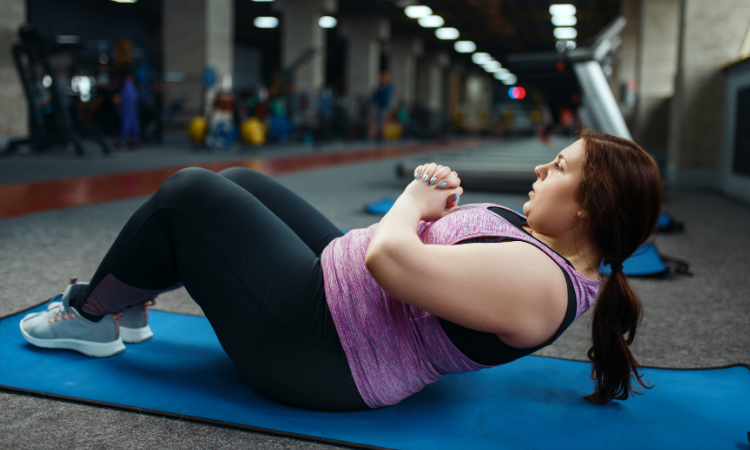Our girth is expanding. Our bellies are showing! Our health is affected. The evidence is not just in appearance but in the health risk associated with the fat stored around our middle.
Health Risks
- One in three Americans is at risk for metabolic syndrome, a cluster of risk factors including obesity, high blood pressure, elevated cholesterol levels, and insulin resistance. Metabolic syndrome often leads to pre-diabetes and cardiovascular disease.
- Fat stored around our abdomen, known as visceral fat, does not just quietly sit there and is different than fat stored in other parts of the body. It affects how sensitive our bodies are to insulin, the hormone needed to regulate and transport blood sugar to cells. As a result, a person can become insulin resistant meaning that blood sugar continues to circulate instead of moving into muscle and then becomes belly fat.
- Cardiovascular Disease – Stroke. Abdominal fat surrounds abdominal organs and is known to be inflammatory which then contributes to cholesterol laden plaques that accumulate in arteries causing heart disease and high blood pressure. It may affect breathing as well.
Ways to Control Belly Fat

Few people are happy with a belly, but there are solutions to fixing the problem and improving our long-term health.
DIET
- Review eating habits with the goal of decreasing the amount of sugary foods and carbohydrate- starchy foods that convert to sugar, like snacks and large portions of pasta, bread, and rice. The less of these foods, the less insulin your body needs to produce. This allows your body to be more sensitive to the insulin carrying glucose to the cells.
- Reduce calories Focus on a plant-based diet, fish or lean meats, cook with healthy fats like olive oil or avocado oil, limit sweets.
EXERCISE
- Get serious about developing an exercise plan as exercise is the magic for getting rid of belly fat. Evidence shows that exercise reduces abdominal fat even independent of weight loss.
- Exercise builds muscle that is metabolically active tissue. As fitness builds, fitness begets a happy desire to stay fit.
- Recommendations include at least 150 minutes of moderate activity, such as brisk walking, per week. Consider 10,000 steps per day. Include strength training twice per week to increase muscle mass.
- Exercise part of medical treatment.
AGING and Belly Fat
We are more apt to struggle with belly fat as we get older for the following reasons:
- As we age, muscle tissue declines while fat tissue increases. Loss of muscle decreases the rate at which your body uses calories. Loss of muscle sometimes contributes to less activity because muscle strength is lost.
- Declining estrogen levels associated with menopause influence where fat is distributed which is more likely to the belly.
To get ahead of it all, be proactive now to prevent greater issues with belly fat later.
MEASURE PROGRESS
Measuring your waist circumference is the most effective way of assessing your belly fat risk. Women should have a waist less than 35 inches and a man’s waist should be less than 40 inches. With a simple tape measure do the following to measure your waist.
- Place the tape measure around your waist just about your hip bone.
- The tape should fit snugly around your waist without pulling tightly. Keep it level.
- Exhale and relax without sucking in your stomach.
As you lose weight you will find measuring your waist is a better assessment for measuring your health risks rather than using the body mass index (BMI), most often used to assess weight. However, two people can weigh the same with one person having a higher muscle to fat ratio than the other person. While you lose belly fat, you also will be losing weight in other places.
Your scale, your clothes, and your tape measure will be the story of the new you!




